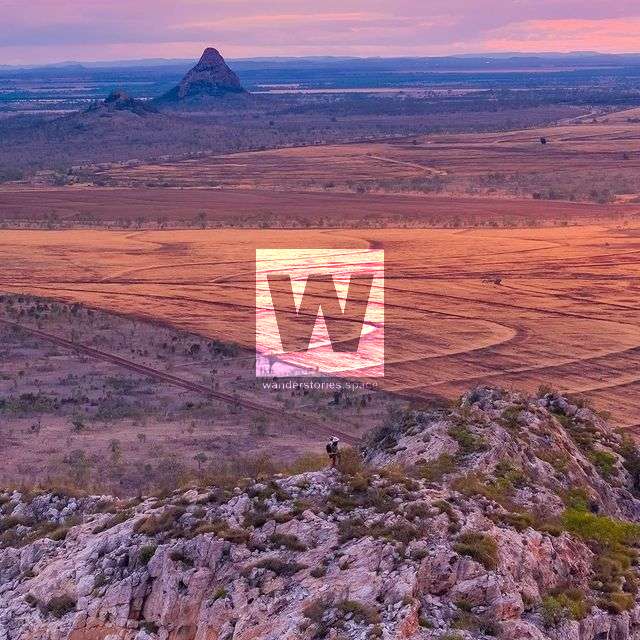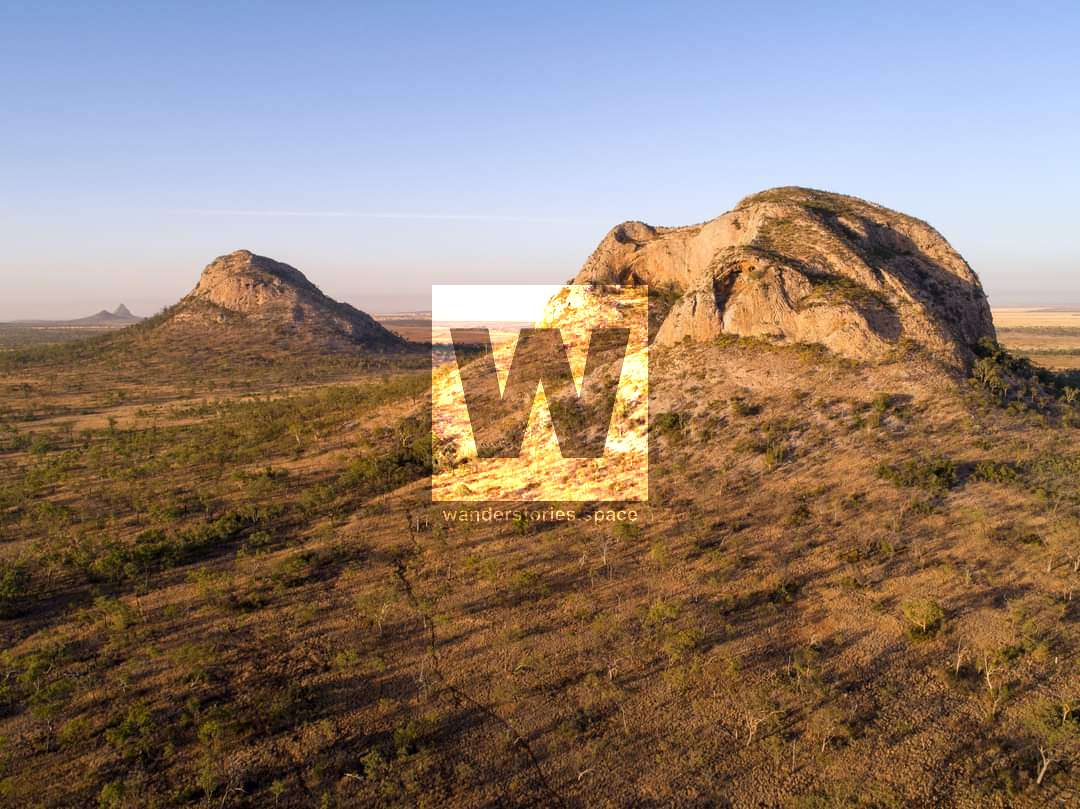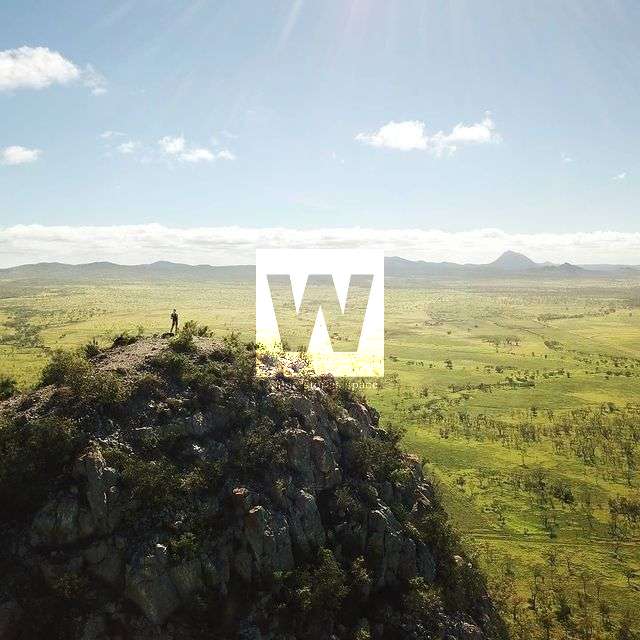Mount Pollux & Mount Castor, The Gemini Mountains
Mount Castor and Mount Pollux form the Gemini Mountains. These Gemini Peaks are 30 million years old ancient volcanic plugs of rhyolite sticking out of the open eucalypt woodland, flat countryside and are part of the Peak Range National Park.

Location - Peak Range National Park, Isaac Region, Central Queensland, Australia
Distance - 2-4 km return
Duration - Allows 2-3 hours return
Grade - 4/5, short but rough track and steep
Access - Access is via the Gemini Track (vehicle track) from the Peak Downs Highway (-22.509239, 147.865499)
Located near Emerald between Moranbah, Clermont, and Dysart on the Peak Downs Highway are the impressive twin peaks of Mount Castor and Mount Pollux that form the Gemini Mountains. The Gemini Peaks are 30 million years old ancient volcanic plugs of rhyolite sticking out of the open eucalypt woodland, flat countryside and are part of the Peak Range National Park.

Mount Pollux is the mountain closest to the road (southernmost) and the one that's commonly hiked, as it's the closer of the two. Both peaks provide a challenging hike with steep terrain so good footwear is a must. Remember to bring plenty of drinking water. These peaks off spectacular 360-degree views of the surrounding landscape with views out to Mount Commissioner (485 m), Red Riding Hood (515 m), Mount Saddleback (525 m), Fletchers Awl (545 m) and Mount Donald (755 m) to the southeast and Mount MacDonald (465 m) and Wolfang Peak (505 m) to the southwest.
How to get to The Gemini Mountains
Drive towards The Gemini Mountains along the Peak Downs Highway. Turn down the dirt from at -22.509239, 147.865499. There is a network of dirt roads for walking from the Peak Downs Highway to the foothills of the Gemini Peaks. Park at the national park gate entry as the Gemini Peaks section is pedestrian access only - vehicle access is not permitted. A 40 minute hike to the top for epic views of the Isaac region.

Mount Pollux
Distance: 2 km
Duration: 2-3 hours return
There are many routes to the summit of Mount Pollux (555 m), the easiest being from the southern side. The northern side has the gentlest gradient and locals have marked out a bit of a trail from the base to the top with a series of pink ribbons. There is a worn footpad with the track that is pretty easy to follow, just stay on top of the ridge. There is no official trail and after driving to within a few hundred metres of the mountain, steeply scramble up the cliffs. From the continue across the ridge northern highest point, the summit.
The views from the summit are absolutely incredible with views across to Mount Castor. The best time to do this hike is late afternoon when it's cooler and to catch an amazing sunset. Take a headtorch, carefully make your way back down before it's dark.
Mount Castor
Distance: 2 km
Duration: 2-3 hours return
Walk 6.6 kilometres to the back of Mount Castor (545 m) where the climb starts. Climb up the back and climb down the same way. The ridge around the back is pretty easy to follow up and down.
Interactive Map
Notes
- There's mobile phone reception at the summit and in other places.
- These peaks are best hiked in winter. Temperatures can exceed 40°C in summer months and this little shade. Remember to drink plenty of water on your hike.
- Use good footwear and be careful when scrambling and when around cliff edges.
- There's plenty of birdlife around the peaks so keep that in mind when flying drones.
This article, and all other articles, are for entertainment purposes only and are not to be used as a guide. Please see our Disclaimer for more information.
